I am trying to find the points with edge-adjacent Voronoi regions in a given dataset. I'm new to computational geometry, but from reading up online, it appeared that using the Delaunay tessellation would be an easy way to do this. This PDF in particular even has a lemma that states
Lemma 2.4 Two points of S are joined by a Delaunay edge iff their Voronoi regions are edge-adjacent.
So, I found the delaunay tessellation of my dataset as
dt = delaunay(dataset); %using delaunayn() since dataset can be multidimensional
But now, when I plot this along with the voronoi diagram for this dataset, I find that the delaunay edges returned connect points whose regions are not actually edge-adjacent.
Here is the code I used to plot Voronoi and Delaunay together:
voronoi(dataset(:, 1),dataset(:, 2));
hold on;
dt = delaunayn(dataset);
triplot(dt, dataset(:, 1), dataset(:, 2), 'red');
And here is the output: 
As an example of the problem, see the point X on the right end of the figure connected to point Y near the lower left corner.
Another example is in this SO question - the point 1 is connected to 2 and 3, even though they're not adjacent, and there doesn't seem to be any way 1 and 2 could share an edge even if extended to infinity. This question is actually what prompted me to test the delaunayn output with the above code.
Why is this happening, and how do I actually get the edge-adjacent neighbour regions that I need?
Note: For seeing the image in full size and clarity, please right click and choose 'View image' or similar.
